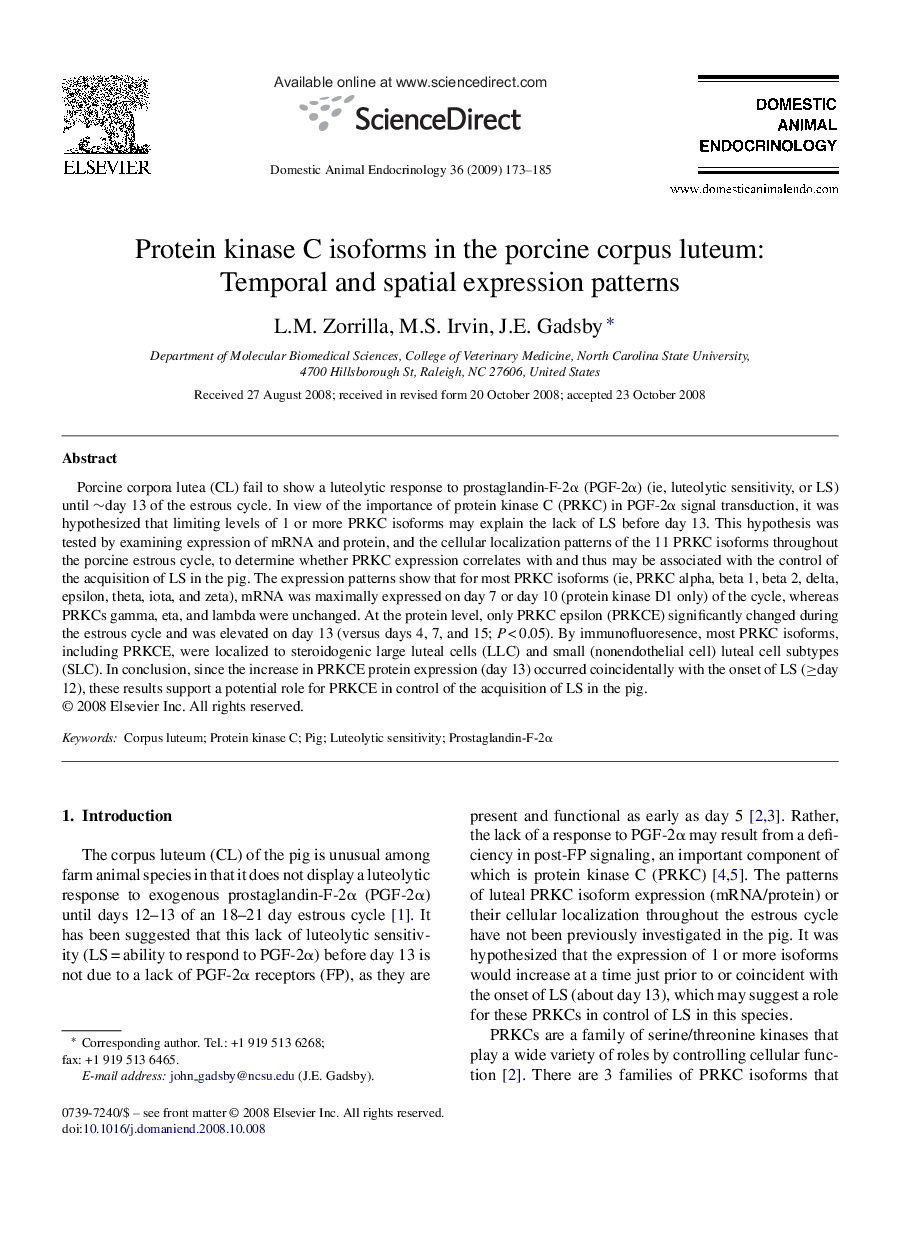| Article ID | Journal | Published Year | Pages | File Type |
|---|---|---|---|---|
| 2393985 | Domestic Animal Endocrinology | 2009 | 13 Pages |
Porcine corpora lutea (CL) fail to show a luteolytic response to prostaglandin-F-2α (PGF-2α) (ie, luteolytic sensitivity, or LS) until ∼day 13 of the estrous cycle. In view of the importance of protein kinase C (PRKC) in PGF-2α signal transduction, it was hypothesized that limiting levels of 1 or more PRKC isoforms may explain the lack of LS before day 13. This hypothesis was tested by examining expression of mRNA and protein, and the cellular localization patterns of the 11 PRKC isoforms throughout the porcine estrous cycle, to determine whether PRKC expression correlates with and thus may be associated with the control of the acquisition of LS in the pig. The expression patterns show that for most PRKC isoforms (ie, PRKC alpha, beta 1, beta 2, delta, epsilon, theta, iota, and zeta), mRNA was maximally expressed on day 7 or day 10 (protein kinase D1 only) of the cycle, whereas PRKCs gamma, eta, and lambda were unchanged. At the protein level, only PRKC epsilon (PRKCE) significantly changed during the estrous cycle and was elevated on day 13 (versus days 4, 7, and 15; P < 0.05). By immunofluoresence, most PRKC isoforms, including PRKCE, were localized to steroidogenic large luteal cells (LLC) and small (nonendothelial cell) luteal cell subtypes (SLC). In conclusion, since the increase in PRKCE protein expression (day 13) occurred coincidentally with the onset of LS (≥day 12), these results support a potential role for PRKCE in control of the acquisition of LS in the pig.
